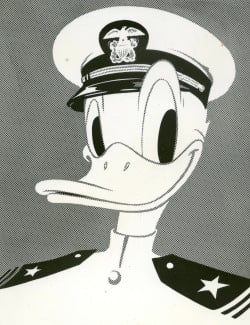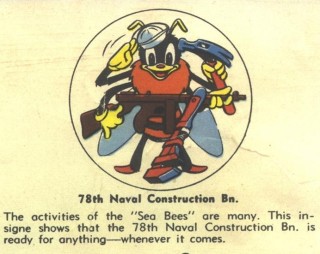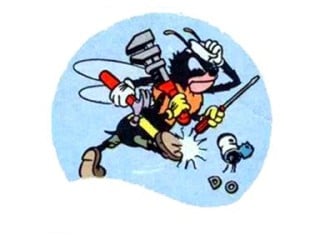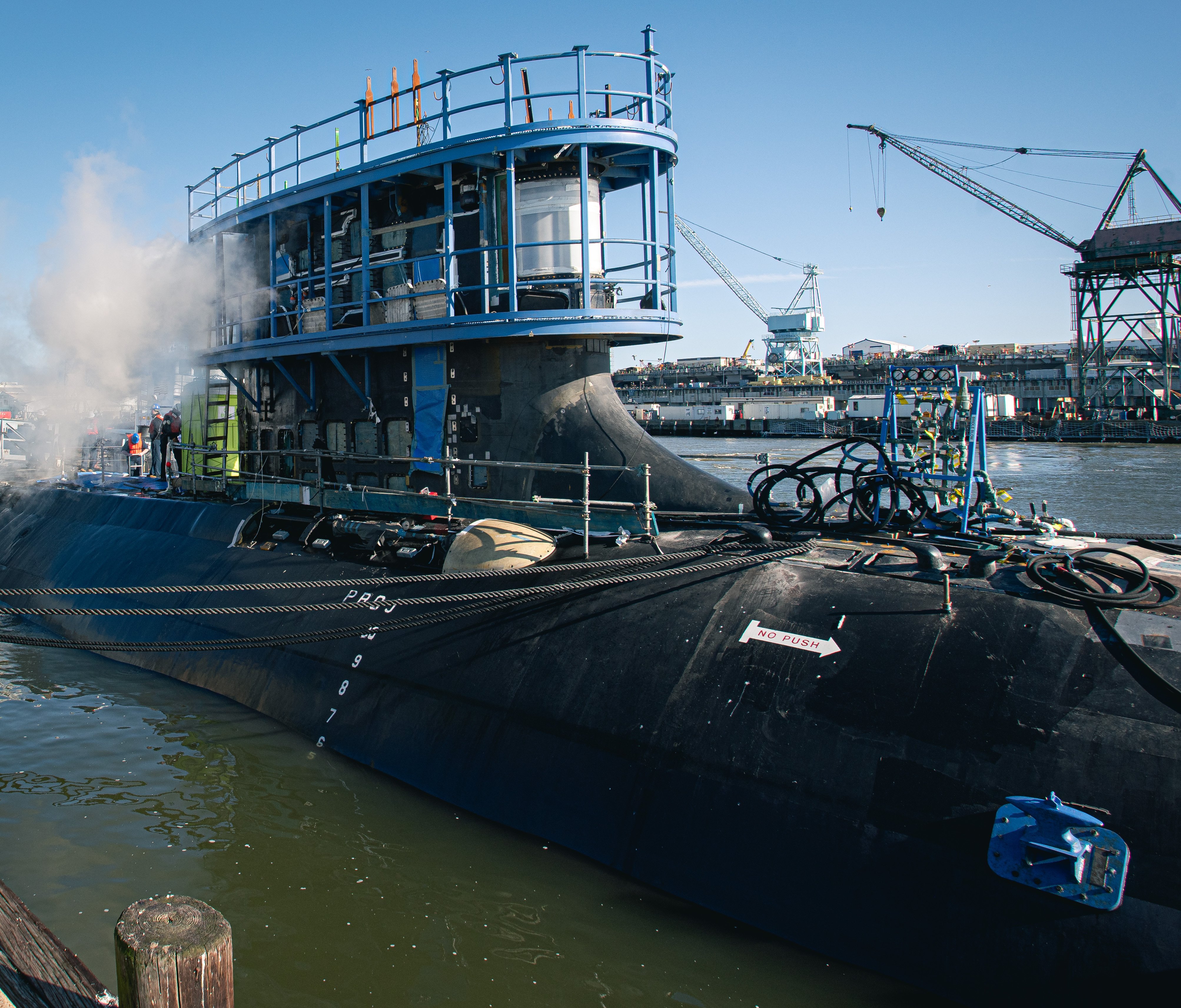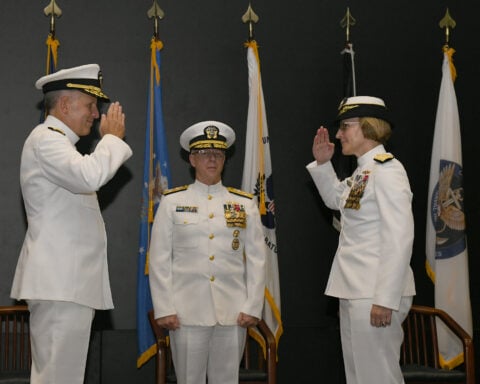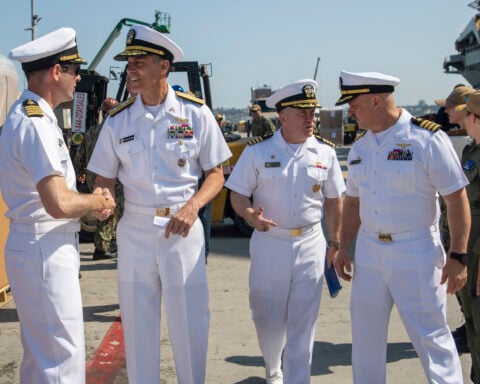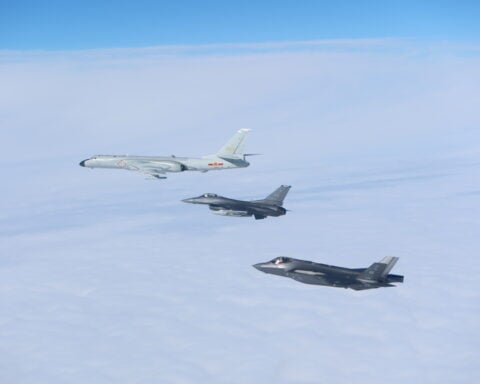During World War II, Disney had its artists draw up roughly 1,200 insignias for the U.S. military, many for Naval units. After Mickey Mouse rode a goose in a patch for a Naval Reserve squadron stationed at Floyd Bennett Field in New York, the illustrations became illustrious among units and inspired Naval artists to recreate the magic, designing their own logos in the Disney style.
Their popularity can be attributed to their humorous quality, which gave sailors a sense of nostalgia rather than being typically military logos.
“As incongruous as Disney characters are to the horrors of war, these cartoon military patches embodied pop culture, innocence, American values, and everything the troops loved about home—a much more fitting emblem than a heraldic pompous symbol with no sentimental significance,” the website @issue wrote.
Disney had to dedicate five artists to the task on a full-time basis because of the volume of requests by units for logos, according to @issue.
Almost every Disney character was used in the project— except Bambi. By far the most requested figure was Donald Duck.
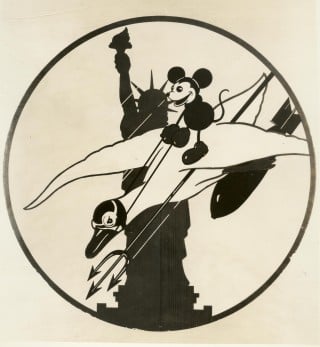 This logo for Floyd Bennett Field depicts Mickey Mouse flying atop a goose (bomber) with a Navy trident in front of a silhouetted Statue of Liberty. The logo predates World War II and was not sanctioned by Disney. However the insignia likely led the charge for similar insignia after the start of the war.
This logo for Floyd Bennett Field depicts Mickey Mouse flying atop a goose (bomber) with a Navy trident in front of a silhouetted Statue of Liberty. The logo predates World War II and was not sanctioned by Disney. However the insignia likely led the charge for similar insignia after the start of the war.
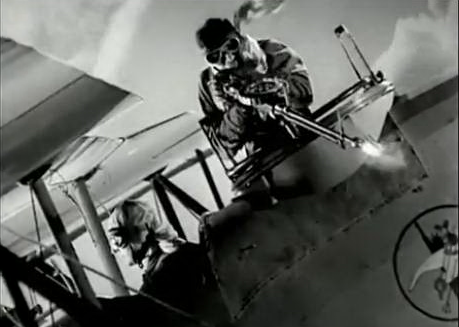 The insignia was taken from the memorable silver-screen scene in King Kong. It can be seen briefly in this still frame.
The insignia was taken from the memorable silver-screen scene in King Kong. It can be seen briefly in this still frame.
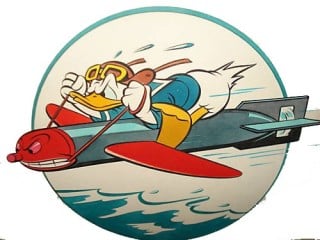 Donald Duck zooms from an air-launched torpedo, guiding it into its target.
Donald Duck zooms from an air-launched torpedo, guiding it into its target.
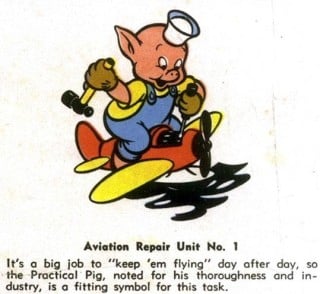 This insignia was for Aviation Repair Unit No. 1, providing aircraft repair and maintenance personnel for overseas deployment as advanced bases were readied.
This insignia was for Aviation Repair Unit No. 1, providing aircraft repair and maintenance personnel for overseas deployment as advanced bases were readied.
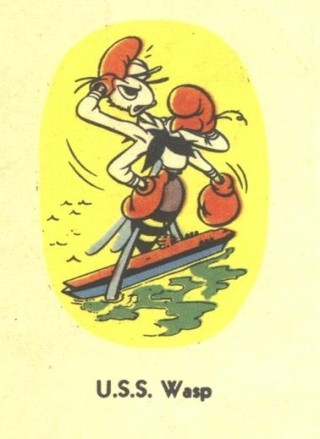 USS Wasp (CV-7), churning across the sea carrying aircraft, is clearly ready for the fight. She was sunk on Sept. 15, 1942 by a Japanese submarine.
USS Wasp (CV-7), churning across the sea carrying aircraft, is clearly ready for the fight. She was sunk on Sept. 15, 1942 by a Japanese submarine.
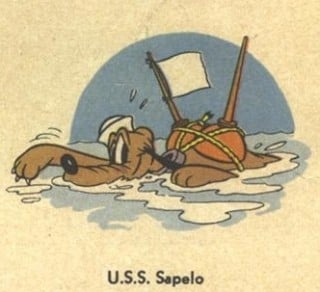 After decommissioning in 1933, the USS Sapelo (AO-11) was reactivated in 1941 to bring vital shipments of fuel to numerous places in the Atlantic.
After decommissioning in 1933, the USS Sapelo (AO-11) was reactivated in 1941 to bring vital shipments of fuel to numerous places in the Atlantic.
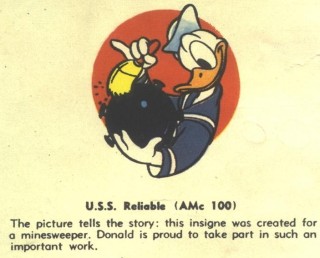 The caption says it all. Throughout the war, USS Reliable (AMc-100) safeguarded Los Angeles Harbor.
The caption says it all. Throughout the war, USS Reliable (AMc-100) safeguarded Los Angeles Harbor.
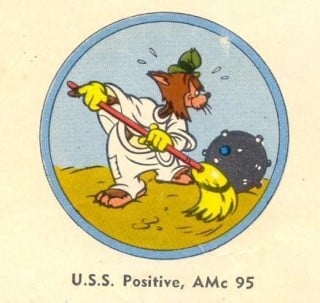 Another minesweeping ship, the USS Positive (AMc-95) swept up mines for the Naval Operating Base at Guantanamo, Cuba, from March 1943 to January 1945.
Another minesweeping ship, the USS Positive (AMc-95) swept up mines for the Naval Operating Base at Guantanamo, Cuba, from March 1943 to January 1945.
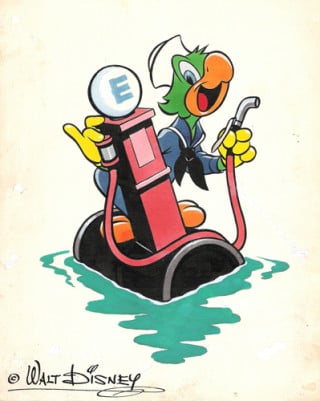 USS Escambia (AO-80) had the dangerous job of fueling various vessels during the invasion of the Marshall Islands, aircraft carriers as they launched strikes against the Philippines, task-force vessels supporting the invasion of Okinawa, and aircraft flying raids against the Japanese. The ship received five battle stars during the war.
USS Escambia (AO-80) had the dangerous job of fueling various vessels during the invasion of the Marshall Islands, aircraft carriers as they launched strikes against the Philippines, task-force vessels supporting the invasion of Okinawa, and aircraft flying raids against the Japanese. The ship received five battle stars during the war.
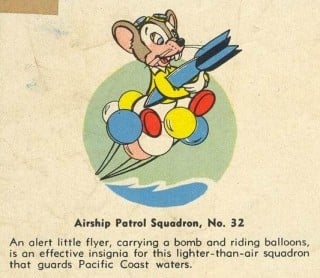 Airships were favored over airplanes to escort ships and scout for submarines because of their slower speeds. This logo for Airship Patrol 32 shows a mouse perched on balloons ready to drop bombs the enemy.
Airships were favored over airplanes to escort ships and scout for submarines because of their slower speeds. This logo for Airship Patrol 32 shows a mouse perched on balloons ready to drop bombs the enemy.
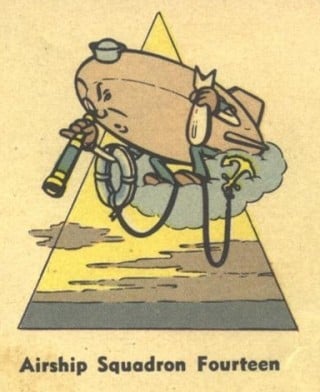 This Airship Squadron 14 insignia depicts an airship atop of a cloud over the ocean with a telescope in one hand with a bomb in the other, combing the seas for enemy vessels.
This Airship Squadron 14 insignia depicts an airship atop of a cloud over the ocean with a telescope in one hand with a bomb in the other, combing the seas for enemy vessels.
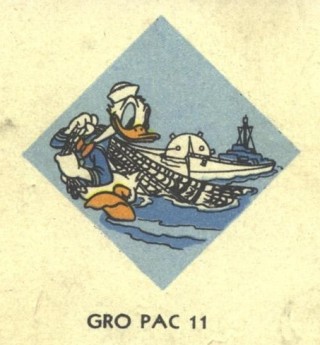 Donald Duck hauls along a net dragging for mines, suggesting the duty as a minesweeping squadron.
Donald Duck hauls along a net dragging for mines, suggesting the duty as a minesweeping squadron.
Artists created about ten logos for Naval Construction Battalions (Seabees). Two of them are shown here — 78th and 60th Naval Construction Battalion — which added Disney flair to the classic Seabee logo.
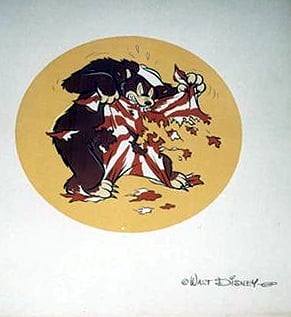 USS Baya (SS-318) completed five war patrols from August 23, 1944 to July 25, 1945 in the South China Sea, Gulf of Siam, Java Sea, and the Philippine Sea. She sank four Japanese vessels. The logo displays a bear ferociously ripping and chewing apart the naval ensign of Japan, depicting her relentless pursuit of Japanese sea craft.
USS Baya (SS-318) completed five war patrols from August 23, 1944 to July 25, 1945 in the South China Sea, Gulf of Siam, Java Sea, and the Philippine Sea. She sank four Japanese vessels. The logo displays a bear ferociously ripping and chewing apart the naval ensign of Japan, depicting her relentless pursuit of Japanese sea craft.
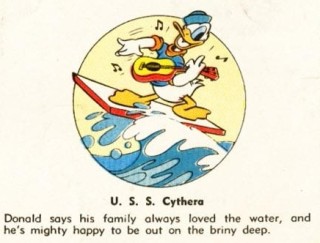 USS Cythera (PY-26) functioned as a civilian yacht before seeing service in both world wars.
USS Cythera (PY-26) functioned as a civilian yacht before seeing service in both world wars.
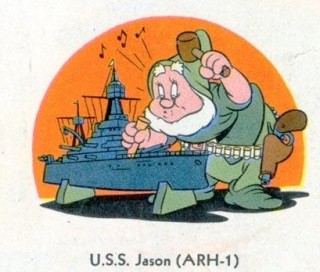 USS Jason (AR-8) was a repair ship serving in Purvis Bay in the Solomon Islands, and Ulithi, where she spent the greatest part of the war.
USS Jason (AR-8) was a repair ship serving in Purvis Bay in the Solomon Islands, and Ulithi, where she spent the greatest part of the war.
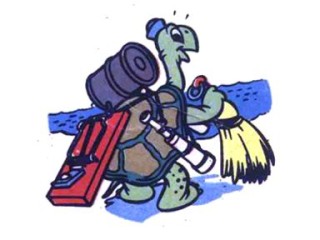 USS YMS 329 was a minesweeper serving in the pacific. Her insignia contains an enthusiastic turtle at the ready with a broom, a telescope, fuel, and a mousetrap on its back. A Japanese mine sunk her off of Borneo on June 16, 1946.
USS YMS 329 was a minesweeper serving in the pacific. Her insignia contains an enthusiastic turtle at the ready with a broom, a telescope, fuel, and a mousetrap on its back. A Japanese mine sunk her off of Borneo on June 16, 1946.
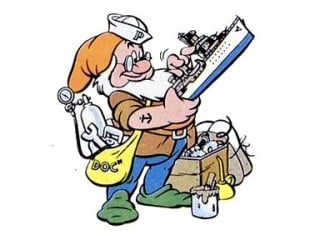 During World War II, the USS Piedmont (AD-17) serviced destroyers near battle areas in the Pacific to keep them fit for duty. She also served in the Cold War, Korean War, and the Vietnam War, winning four battle stars for her efforts in the Korean War and one for service in Vietnam.
During World War II, the USS Piedmont (AD-17) serviced destroyers near battle areas in the Pacific to keep them fit for duty. She also served in the Cold War, Korean War, and the Vietnam War, winning four battle stars for her efforts in the Korean War and one for service in Vietnam.
A previous version of this post misstated the number of logos Disney designed for the military. It was 1,200 insignia, not 3,000. USNI News regrets the error.

